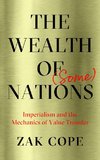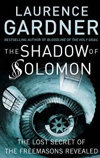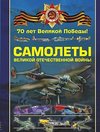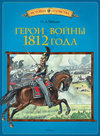
-
 Anglický jazyk
Anglický jazyk
European music
Autor: Source: Wikipedia
Source: Wikipedia. Pages: 44. Chapters: Alois Kottmann Award, Armenia on EuroVoice, Bicinium, Byzantine lyra, Canadian Music Centre, Celtic music, Chromatic fantasia, Classical music, European Hot 100 Singles, European Top 100 Albums, European Youth Music... Viac o knihe
Na objednávku, dodanie 2-4 týždne
16.54 €
bežná cena: 18.80 €
O knihe
Source: Wikipedia. Pages: 44. Chapters: Alois Kottmann Award, Armenia on EuroVoice, Bicinium, Byzantine lyra, Canadian Music Centre, Celtic music, Chromatic fantasia, Classical music, European Hot 100 Singles, European Top 100 Albums, European Youth Music Festival, Euro Digital Songs, Euro disco, Geisslerlieder, Gothic metal, Heavy metal music, International Days of Music Hesse Main-Taunus Hofheim, Lijerica, Organum, Parlour music, Psalmus Hungaricus (Kodaly), Schlager music, Sung poetry, Tarmvred, Vítezslava Kaprálová. Excerpt: Heavy metal (often referred to as metal) is a genre of rock music that developed in the late 1960s and early 1970s, largely in the United Kingdom and in the United States. With roots in blues rock and psychedelic rock, the bands that created heavy metal developed a thick, massive sound, characterized by highly amplified distortion, extended guitar solos, emphatic beats, and overall loudness. Heavy metal lyrics and performance styles are generally associated with masculinity and machismo. The first heavy metal bands such as Led Zeppelin, Deep Purple and Black Sabbath attracted large audiences, though they were often derided by critics, a status common throughout the history of the genre. In the mid-1970s Judas Priest helped spur the genre's evolution by discarding much of its blues influence; Motörhead introduced a punk rock sensibility and an increasing emphasis on speed. Bands in the New Wave of British Heavy Metal such as Iron Maiden followed in a similar vein. Before the end of the decade, heavy metal fans became known as "metalheads" or "headbangers". During the 1980s, glam metal became a commercial force with groups like Mötley Crüe and Poison. Underground scenes produced an array of more extreme, aggressive styles: thrash metal broke into the mainstream with bands such as Metallica, Megadeth, Slayer, and Anthrax, while other styles of the most extreme subgenres of metal like death metal and black metal remain subcultural phenomena. Since the mid-1990s, popular styles such as nu metal, which often incorporates elements of grunge and hip hop; and metalcore, which blends extreme metal with hardcore punk, have further expanded the definition of the genre. Heavy metal is traditionally characterized by loud distorted guitars, emphatic rhythms, dense bass-and-drum sound, and vigorous vocals. Metal subgenres variously emphasize, alter, or omit one or more of these attributes. New York Times critic Jon Pareles writes, "In the taxonomy of popular music, heavy metal is a
- Vydavateľstvo: Books LLC, Reference Series
- Rok vydania: 2013
- Formát: Paperback
- Rozmer: 246 x 189 mm
- Jazyk: Anglický jazyk
- ISBN: 9781156463994






 Ruský jazyk
Ruský jazyk 





